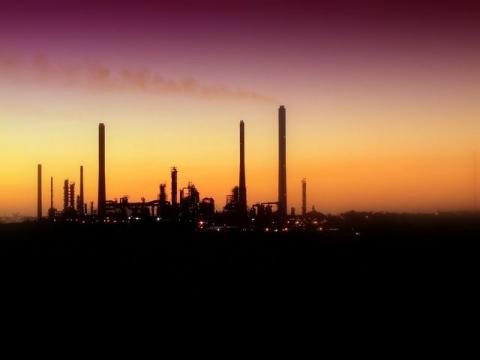
For the past couple weeks we shined the spotlight on the Oil and Gas Industry; WHAT it is and WHICH components need to be monitored. This week let's discuss WHY, by looking at real life applications:
Natural Gas Processing Case History
A natural gas exploration and production company uses multiple scrubbers to clean out the impurities of the natural gas that they receive. The impurities consist of hydrogen sulfide and amines. The waste is dumped into their flare stack and then the cleaned natural gas is sold.
The waste gas stream can be used to supplement the fuel supply that operates the flare stack, but the heating value of the waste gas stream varied over a wide range, very lean at some times and very rich at others. So they needed to identify the heating value of the waste stream to determine whether it could be used as a standalone fuel source. Adding an analyzer that can provide a continuous heating value measurement of the varying waste stream would be necessary.
- They chose the CalorVal because of its ability to accurately and continuously measure over a wide measurement range the heating value of the corrosive waste stream. All sample-wetted parts of the CalorVal are constructed of materials that are compatible with hydrogen sulfide and amines.
Find out More Details.
Proppants Case History
Some oil & gas exploration and production companies use sand-based products for hydraulic fracturing. The special coating on these products enable better production rates by recovering more hydrocarbons.
Sand or other man made materials are coated with a proprietary solvent based coating at 120°F. The coated material is then moved to a two zone dryer where it is heated to 240°F and 140°F respectively. The dryers evaporate off the solvents leaving the finished product.
The manufacturer of the coating was informed by their System Integrator that because of the potential hazard of an explosion from the buildup of flammable solvent vapors in their dryers, they needed monitoring.
They investigated the different technologies available for this application and chose flame temperature technology over Catalytic and Infrared due to its ability to handle the tough sample environment.
- In addition, the PrevEx analyzers are the only analyzers that meet all the requirements of the NFPA 86 standards.
Find out More Details.
Amine Treater Case History
Raw natural gas is extracted from the wells and sent to an Amine System to remove acid gases, CO2 and hydrogen sulfide (H2S). This is accomplished by running the gas through a column with amine liquid flowing in the opposite direction, stripping the acids from the gas and absorbing them into the liquid. The natural gas is then sent for processing while the amine is sent to be regenerated. The regeneration process removes the acid gases from the amine solution, allowing the amine solution to be re-used. The acid gases are then sent to an abatement system, such as a thermal or catalytic oxidizer, for destruction.
The midstream natural gas company wanted to protect their oxidizer from receiving high LFL concentrations of these combustible constituents. They needed an analyzer that could detect hydrocarbons in the CO2 discharge stream and if the LFL concentration exceeded an acceptable limit for the oxidizer, divert the discharge to either a flare or the atmosphere. They wanted an analyzer that could provide a continuous, near real-time reading. It had to be fast, highly reliable and operate in the absence of oxygen.
- After a thorough investigation and education of the monitoring technologies available, the Company chose Control Instruments’ NDIR Analyzer.
Find out More Details.

Add new comment